Whether you’re selling off some of your collection or hunting for your next holy grail vinyl purchase, understanding how used records are graded is fundamental.
It’s important as a seller, as you want to provide an honest and fair assessment of what you’re selling, but it’s also important for the customer as a key indicator of quality. This is particularly true when buying online, as you cannot closely inspect the record as you might in a physical record store.
By far the most established and widely used grading system for judging the condition of records is the Goldmine Standard. This is the same system used by marketplaces like Discogs, which is generally the same system used across eBay and many used record stores. In most cases, you will find a grading system either the same, or very similar to this method. So for the purpose of this article, we will refer to the Goldmine system.
Why is a system important?
Well, consistency, ultimately. One man’s “near mint” is another man’s “very good plus”. Using a widely agreed standard to set the value of records reduces some of the ambiguity and provides context to a collector looking to have their record(s) valued.
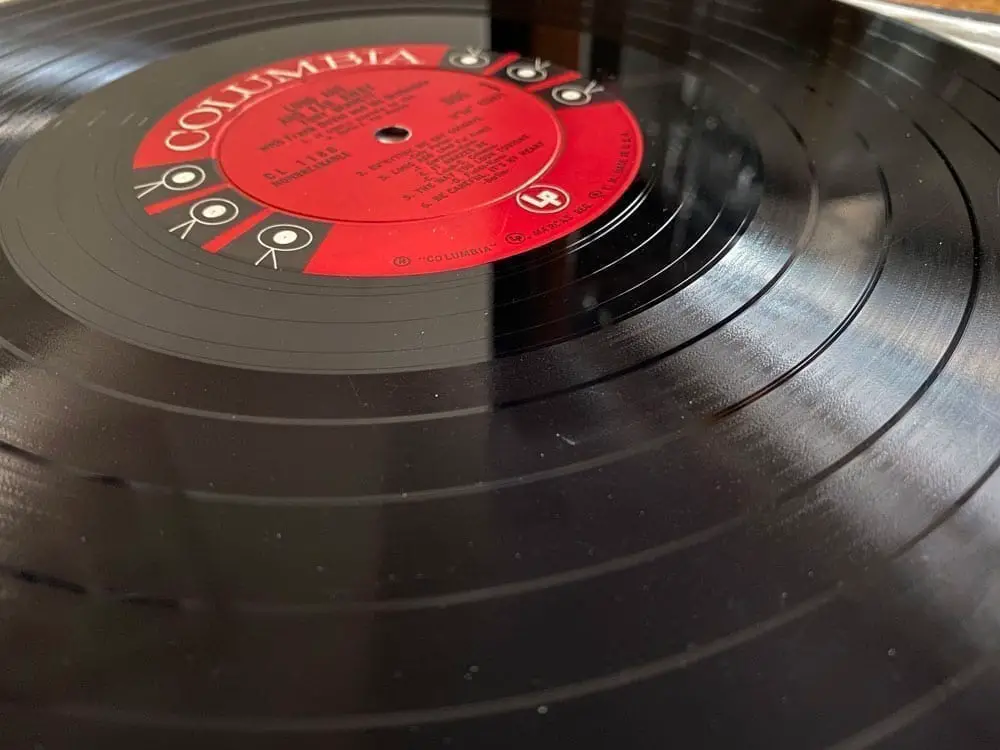
How Does the Record Grading System Work?
A grade is generally given to the record and sleeve, respectively, as there will often be discrepancies between each piece. If an album is graded VG for the cover and VG+ for the record, Goldmine will work out a single grade by adding the two values together and dividing it by two. This process will get you a rough value of a mixed-grade LP. Some go through this process; others do not. All the same, assessing the disk and the cover separate is crucial.
Grading Vinyl Records Guide:
Most records are graded visually under strong light. In the case of a record store, they will rarely have time to playback each record. However, in the case of a rare or very collectible record, a good record store or seller will take the time to listen carefully when such records materialize.
If you are the seller, and you’re using an online marketplace like Discogs or eBay, I would highly recommend taking time to play a record before grading if you can. After all, you want to protect your rating and reputation as a seller.
Now on to the grades and what they typically mean:
MINT (M)
This grade is reserved for records that are 100% perfect (typically like new and sealed). It’s considered good practice to get a second opinion before awarding a mint grade to the record or sleeve.
NEAR MINT (NM OR M-)
These records are very near perfect. They could be opened, but still appear perfect like they just arrived from the retail store. Many cautious retailers will never grade a record higher than NM. The record should show no visible defects or signs of wear. Factory defects should also be non-existent – so that includes surface bubbles and off-center pressings. They can be records that have been played, but not too often, and always on an excellent turntable with care. Naturally, the cover should be free of creases, ring wear, cut-out holes, writing, and splits of any kind. The same applies to any other inserts, posters, and lyric sheets.
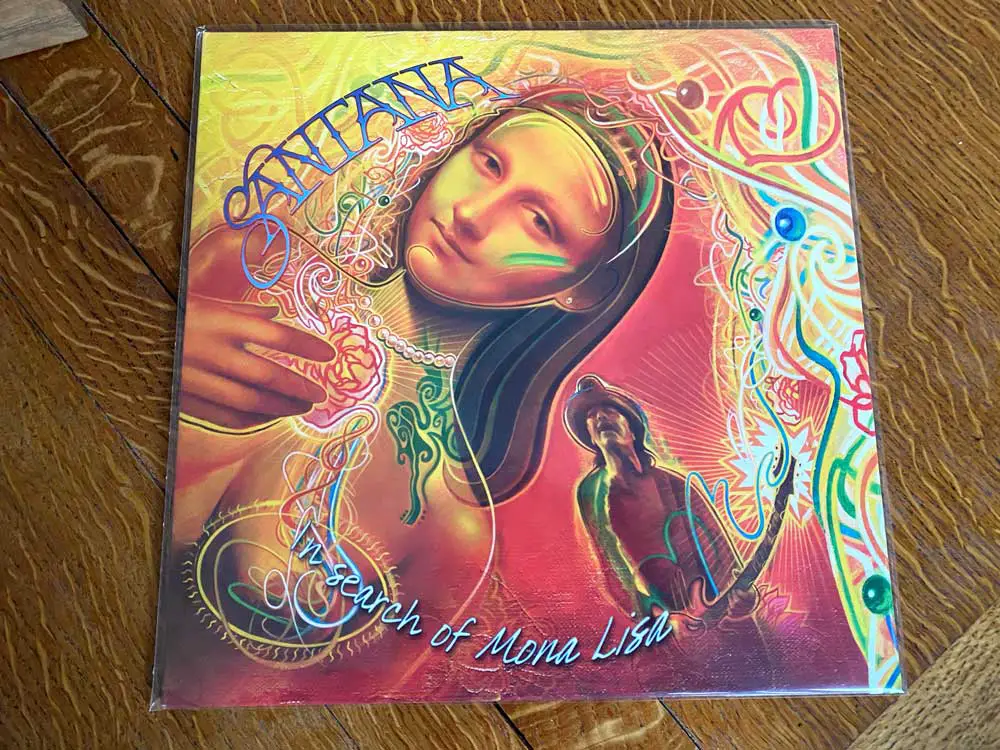
VERY GOOD PLUS (VG+) – (Some use EXCELLENT ‘E’)
VG+ records are in excellent condition, except for some minor signs of wear, including light scuffs or very light scratches that do not affect the listening experience. Slight warps that do not affect the sound are also acceptable. Any sign of previous playback and wear should be very minor; there might be some spindle wear and perhaps a few scuff marks on the label, but overall the record should be in very good shape.
The same applies to the record sleeve, which should have only very minor signs of shelf wear, such as a few light scuffs and perhaps some element of discoloration. Surprisingly, according to Goldmine, a VG+ cover may have some defacing, such as cut-out markings. In the end, the buyer will determine if such defects are a deal-breaker or not. (Generally, VG+ records are worth 50% of the Near Mint value.)
In my experience, many sellers tend to over-grade their records, and therefore, I set VG+ as my go-to standard. Anything below this level, and it’s worth exercising some degree of caution.
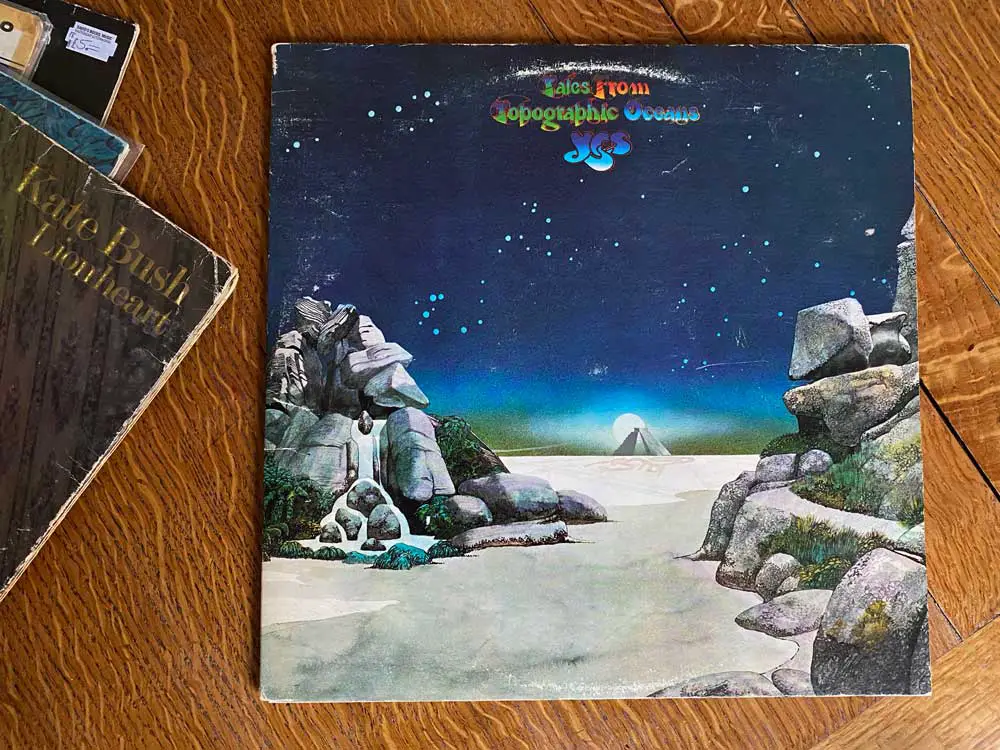
VERY GOOD (VG)
The above said, VG records usually sell for no more than 25 percent of a NM record, so it’s fair to say that there are many good deals in the VG category. For many listeners, a VG record or sleeve will be great value for money. All the VG+ flaws mentioned will be far more obvious. Groove wear and light scratches deep enough to feel with a fingernail are likely visible to the naked eye. When played, a VG record has surface noise, and some scratches may be audible, especially in quiet passages and between tracks. Any noise should not be overpowering or too distracting; pops and clicks are occasional, not constant.
Album covers rated as very good are sound in structure overall and should look ‘well-loved’ but not trashed. There could be signs of ring-wear, perhaps some minor writing, or even some tape and/or stickers on the surface. Seam splitting will be more obvious, and there could be some wear in the middle of the inner or outer sleeve where the record sits.
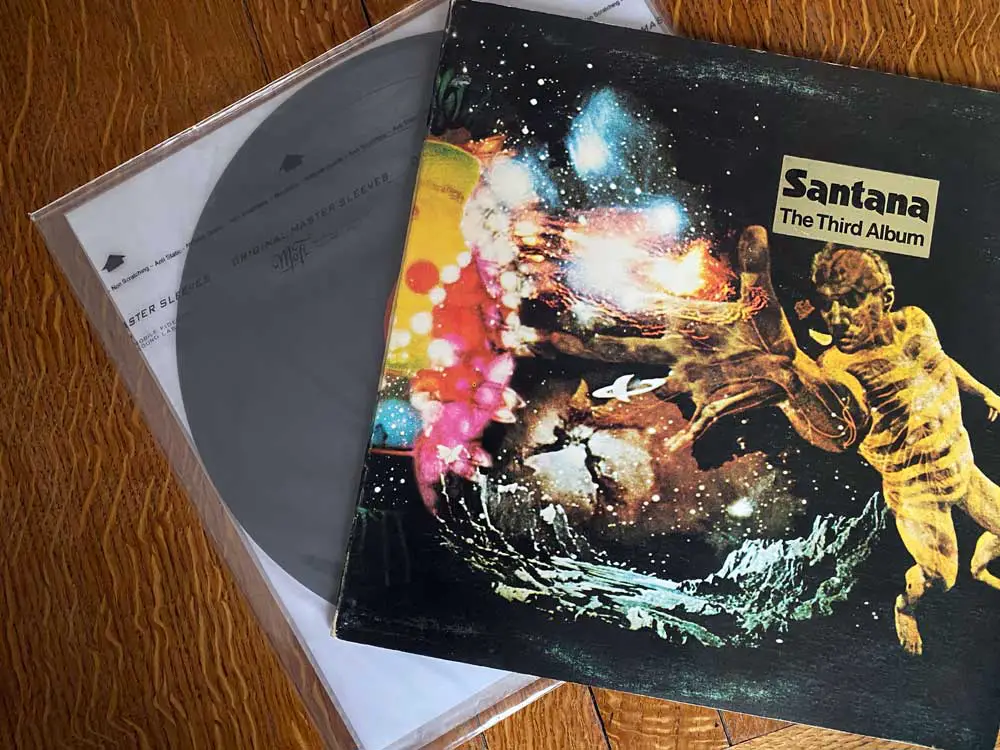
GOOD (G) – (May also include Good Plus ‘G+’ or Very Good Minus ‘VG–’)
At this grade, records often go for 10 to 15 percent of the Near Mint value.
The record condition is acceptable and still plays through without skipping. As you might expect, it has significant surface noise and groove wear, and the label is worn, with significant spindle wear. There might also be some writing or other obvious damage. A Good cover has very heavy ring wear and/or seam splits, and might show lots of writing, such as radio station letters, or even a library stamp. Many collectors will settle for a G-rated record as a compromise until a better copy shows up later.
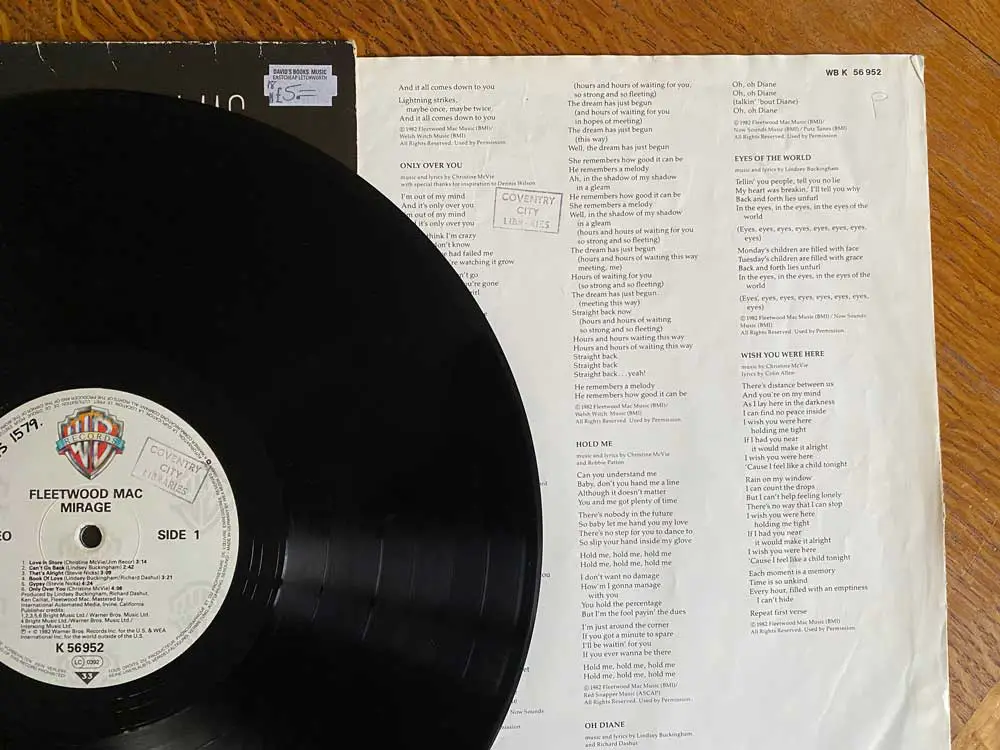
POOR (P) and FAIR (F)
At this level, it’s probably better to walk away. Poor and Fair rated records go for 0 to 5 percent of the Near Mint value. In some cases, they’re practically unplayable and worthless. Many of these records would make better coffee costers than recorded music. Expect heavy warping, or skipping – perhaps even cracks. The covers are so heavily damaged they could have major rips, water damage, or worse.
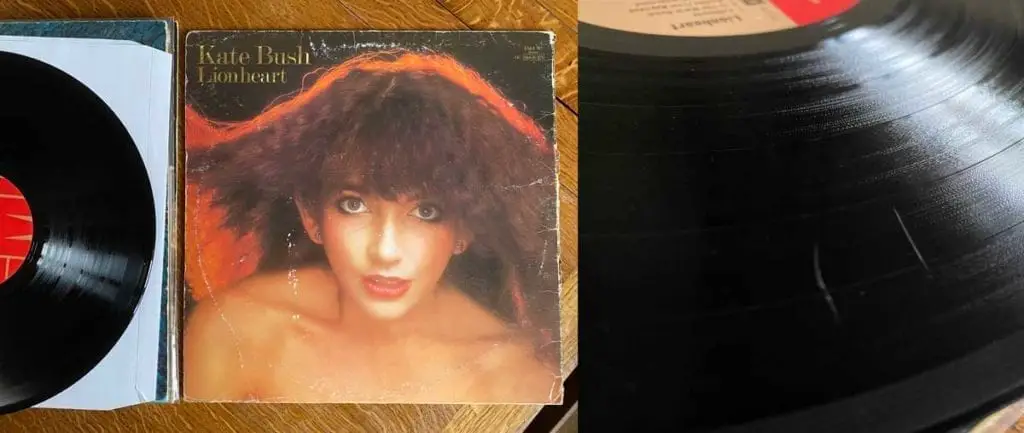
How To Grade Vinyl Records – The Bottom Line
With any set of guidelines, there will always be a degree of personal interpretation and artistic license. However, when it comes to assessing the quality of records, the above grades help reduce risk and increase consumer confidence. In the case of online marketplaces, it’s in sellers’ interest to stay close to these guidelines and protect their reputation. So in that sense, the system will self-police to a degree. We’ve all experienced disappointment when a record arrives that doesn’t match your expectation, but most sellers are pretty quick to react and resolve issues in my experience. For now, it’s the best system we’ve got.

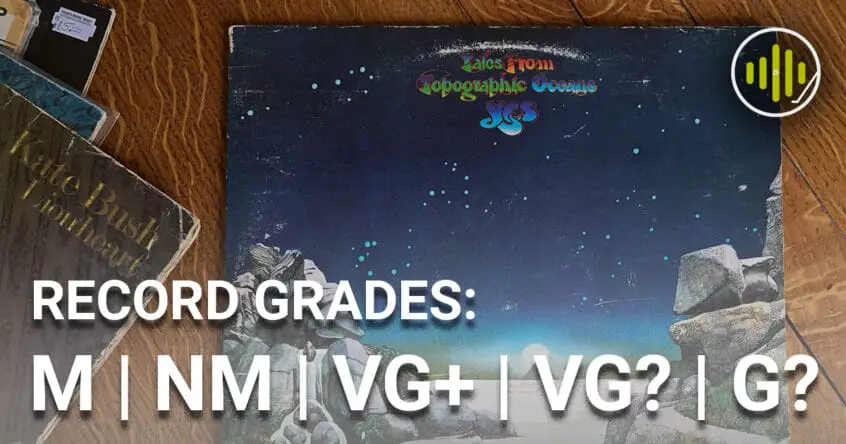


I have had mixed luck on line, I bought a copy of British Steel Original US release rated as NM, it plays well and all in all was probably VG+, but as it is subjective I will give them the benefit of the doubt. The other was the Easy Rider Soundtrack rated NM, it was at best G and much of it was not playable. Both were purchased from a well known online site. I prefer to stick with my local store who if anything under rate a bit and (a) all are playable and (b) if there is an issue bring it back, they will give you your money back. There is a store (they will only ship in Canada) that rates the cover, the label and the vinyl and I will see they are fairly accurate.
For me burn me once and I’m done.
Sounds like you’ve got a good record store there. Great stuff!
I have been buying vinyl from auctions. That state these come from collectors. However receiving and visually, cleaning and playing these vinyl albums they are really not from a collector but we’re very well abused. Had some that were scratched skipped and very warped but played without skipping or play noise like scratches. So I have been burnt on some of the vinyl from collectors. I have even bought a sealed album and when received it was open. All albums are from the 60,70, and 80’s.
“Sealed album” that’s actually open… That’s a bummer…
We are dealing with modulations in the groove which is the size of a strand of human hair or less.Visual inspection does not reveal damage to those grooves, so without playback you are just rolling the dice and hoping for a favourable outcome.This is where cd”s do not seem like a bad idea
As for mono microgroove records from 1948 to the early 1960’s, those were designed to play with a 1-mil diameter spherical stylus. Playing these records with a modern stylus will typically cause it to ride along the bottom of the groove and the record will sound similar to a noisy shellac record. When stereo was introduced in 1957, the microgroove became more narrow and was designed for a 0.7 mil diatmeter spherical stylus. Many mono pressings after 1957 used the newer microgroove because pressing plants started replacing their old equipement and used the newer equipment for mono and stereo pressings. I have records with the original microgroove that sound awful when played with a modern stylus (elliptical, hyperelliptical, and better) but sound pretty good with a 0.7-mil spherical stylus. Unfortunately, it’s not easy to find a 1-mil diameter stylus these days, and finding a 0.7-mil stylus is getting harder as well. Most spherical styli available today have a 0.6-mil diameter.
As for stereo pressings, especially from 1957 through about 1975, those records may have been damaged by listeners using old and new spherical styli that tracked at 4-g or more, or the record was damaged by being played with a mono cartridge. The stereo my parents had tracked at 6-g and damaged all of my records eventually. I’ve found that playing those with a modern stylus can sound pretty good because the stylus rides below the damage at the top of the groove. After about 1975, most people were playing records with magnetic cartridges that tracked at forces less than 4-g.
My point is, play grading needs to have listed the equipment used to play the record. Most record shops will use the house turntable, which likely has a modern stylus (and most don’t clean the record first).
Ortofon produce quite a good range of different mono cartridges and styli. I believe the SPU Mono series has a 1-mil option: https://www.ortofon.com/spu-mono-cg-25-di-mkii-p-609-n-1579
Thanks for this.
What about when a record that appears NM had problems like high surface noise from new the defect being poor quality vinyl perhaps? Playable but still sounds like sh*t. Should it be graded on sound or looks or collectibility.
Thanks again
Hey Eddie. As far as I know, the pressing quality is not really covered by the Goldmine Standard, but it’s often good to check comments on Discogs or community forums (like Steve Hoffman forums for example) to hear from other collectors about the pressing quality.
Hope this helps.
[…] If you have a more than a few vinyl records, you may well be pretty particular with them. Whether you’re a collector or you want to have a sense of where your vintage double vinyl Tusk albums are as glorious as you think they are, grading can help. Here’s more from Your Sound Matters: […]
This is the most basic article on grading possible and hardly worth reading or publishing. NM, EX + EX, EX -,VG+, VG, VG- on their own does nothing to properly grade or describe either the condition of the vinyl or the cover, without extra words to go into details. Many 50’s/60’s vinyl especially in Mono can look VERY different than how they play. And the other way round. It is much more important about how vinyl PLAYS than how it LOOKS. And also vinyl depends on the stylus/cartridge a lot on how it sounds, if not why would some people pay many hundreds of £££,’s for top end equipment if it sounded the same as very low end cheap equipment. I thought “Sound Matters” was a bit more professional and deserved better than this grading article.
Sigh. Your vindictive tone is really unnecessary. As stated in the article, it’s always recommended a seller plays the record back to incorporate this into a grade; sadly, when grading large amounts of records, many sellers and record stores do not have the time to play each and every piece.
As one other commenter puts it, you can always (and probably should) request a playback grade if you suspect a grade is visual only.
Another great essay, Marc. Now if everyone who sold used records would read and adapt these guidelines to their selling acumen, the record buying world would be happier place! But since, as you point out it’s somewhat subjective from seller to seller, at least this will get new buyers in the ballpark. Glad you mentioned the dreaded “visual only” method of grading. As we all know a record may look spectacular only to reveal audible flaws not at all apparent to the naked eye, even after a good cleaning. So it’s always good to check whether a seller’s grade is based on a play-test. I’ve gotten used to requesting it at times before making purchases on Discogs or Ebay, especially as regards classical and jazz. Cheers as always, Marc. Stay safe.
Thanks Paul. Yep – 100% agree on the visual-only point. Sadly many sellers don’t seem to have the time to play all their records (and, I guess in some cases, they can’t). Requesting a playback is definitely recommended – or asking how it was graded, as you rightly say. All the best and thanks for your contribution. 🙂